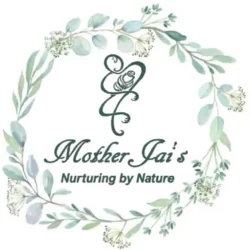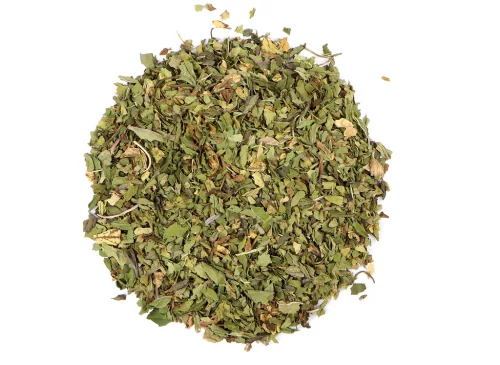
Finding it hard to change the foods that you eat? Here are some ideas that can help you improve your diet. We’ll cover the basics like Atkins, Keto, Paleo, DASH, and Mediterranean diets. These ‘diets’ have demonstrated their effectiveness at improving physical health outcomes in clinical settings. They should be considered more as lifestyle modifications than diets simply because of long term health outcomes. Although, there are risks to long term application of the Atkins and Keto diets.
When compared to the ‘shake’, ‘pill’ or ‘juice’ diet these options provide more nutrition and less expense. These options can also teach you how to prepare healthier food for yourself and your family by helping you create nutrient dense meals everyone can eat. Much more fun than blending a shake for one.

The Atkins & Keto Diets
Atkins and keto are two of the best-known low-carb diets. Both stipulate a drastic reduction in high-carb foods, including sweets, sugary drinks, breads, grains, fruits, legumes, and potatoes. Yet they have differences as well.
Atkins Diet
Though Atkins has evolved to offer a variety of plans, the original version (now called Atkins 20) is still the most popular. It’s broken down into four phases, which are based on your daily net carb (total carbs minus fiber and sugar alcohols) allowance:
- Phase 1 (Induction). This phase allows for 20–25 grams of net carbs per day until you are 15 pounds (7 kg) from your goal weight.
- Phase 2. During this phase, you consume 25–50 grams of net carbs per day until you are 10 pounds (5 kg) from your goal weight.
- Phase 3. Your net carb allowance is raised to 50–80 grams per day until you have met your goal weight and maintained it for 1 month.
- Phase 4. During the final phase, you consume 80–100 grams of net carbs per day for ongoing weight maintenance.
Most Americans get about 50% of their daily calories from carbs, which equates to about 250 grams of carbs if you eat 2,000 calories per day.

Keto Diet
The keto, or ketogenic, diet is a very-low-carb, moderate-protein, high-fat diet plan. Originally used to treat children who experienced seizures, but researchers discovered that it may benefit other people as well. The goal of the keto diet is to get your body into the metabolic state of ketosis, during which it uses fat rather than sugar from carbs as its main energy source.
In ketosis, your body runs on ketones, which are compounds that are formed upon the breakdown of the fat in your food or the fat stored in your body. To achieve and maintain ketosis, most people need to limit their total carb intake to 20–50 grams per day. Macronutrient ranges for the keto diet are typically under 5% of calories from carbs, 10-30% from protein, and 65-90% from fat.
Side Effects of Ketosis
Any diet that involves ketosis can cause adverse effects, such as keto breath, keto skin rashes, and keto flu. Staying in a state of ketosis for long periods can be harmful.
Following either diet can lead to nutrient deficiencies due to food restrictions. For many, carbohydrate sources are also key sources of fiber. When reducing carbohydrates, people should be sure to get enough daily fiber from other sources, such as vegetables.
These diets may increase the risk of deficiencies in electrolytes and many water-soluble nutrients that come from fruits and vegetables.
Ketosis may help burn fat, but it may also burn muscle to use for energy. Following a very low carb diet can result in a loss of muscle mass.
People with chronic kidney disease (CKD) should avoid keto, as weakened kidneys may be unable to remove the acid buildup in your blood that results from these animal foods. This can lead to a state of acidosis, which can worsen the progression of CKD. Lower protein diets are often recommended for individuals with CKD, while the keto diet is moderate to high in protein.

Paleo Diet
The Paleo diet, also known as caveman diet, is a diet based on the food humans’ ancient ancestors might likely have eaten, such as lean meat, nuts, herbs and berries. The diet is based on several premises. Proponents of the diet posit that during the Paleolithic era — a period lasting around 2.5 million years that ended about 10,000 years ago with the advent of agriculture and domestication of animals — humans evolved nutritional needs specific to the foods available at that time, and that the nutritional needs of modern humans remain best adapted to the diet of their Paleolithic ancestors.
Modern humans are said to be maladapted to eating foods such as grain, legumes, and dairy, and in particular the high-calorie processed foods that are a staple part of most modern diets. Modern humans’ inability to properly metabolize these comparatively new types of food led to modern-day problems like obesity, heart disease, and diabetes.
- More protein and meat: Meat, seafood, and other animal products represent the staple foods of modern-day Paleo diets, since advocates claim protein comprises 19-35% of the calories in hunter-gatherer diets.
- Fewer carbohydrates: Non-starchy vegetables. The diet recommends the consumption of non-starchy fresh fruits and vegetables to provide 35-45 % daily calories and be the main source of carbohydrates.
- High fiber: High fiber intake not via grains, but via non-starchy vegetables and fruits.
The problem with the Paleo Diet is that it is misleading. The majority of plants and animals alive during the Paleolithic Era are now extinct. The herbs, flowers, vegetables and fruits we have today are nothing like those people were eating 10,000 years ago. Simply because the environment has changed and people have interfered with plant evolution through cultivation.

DASH Diet
The DASH diet is especially recommended for people with hypertension (high blood pressure) or prehypertension. In addition to being a low salt (or low sodium) plan, this diet provides additional benefits to reduce blood pressure. It is based on an eating plan rich in fruits and vegetables, and low-fat or non-fat dairy, with whole grains. It is a high fiber, low to moderate fat diet, rich in potassium, calcium, and magnesium.
The DASH eating plan has been proven to lower blood pressure in just 14 days, even without lowering sodium intake. Best response came in people whose blood pressure was only moderately high, including those with prehypertension. For people with more severe hypertension, who may not be able to eliminate medication, it can help improve response to medication, and help lower blood pressure.
It can help lower cholesterol, and with weight loss and exercise, can reduce insulin resistance and reduce the risk of developing diabetes. It is a healthy plan, designed for the whole family. You fill up on delicious fruits and vegetables, paired up with protein-rich foods to quench your hunger.
Dash Diet Tips
- Add a serving of vegetables at lunch and at dinner.
- Add a serving of fruit to your meals or as a snack. Canned and dried fruits are easy to use, check for added sugar.
- Use only half your typical serving of butter, margarine, or salad dressing; one to two tablespoons at most.
- Don’t trust low-fat or fat-free condiments because they have added artificial sweeteners and salt.
- Drink low-fat or skim dairy products any time you would normally use full-fat or cream.
- Limit meat to 6 ounces a day. Make some meals vegetarian by getting protein from nuts, seeds, and legumes.
- Add dry beans and lentils to your diet; high in fiber
- Instead of snacking on chips or sweets, eat unsalted pretzels or nuts, raisins, low-fat and fat-free yogurt, frozen yogurt, unsalted plain popcorn with no butter, and raw vegetables.
- Read food labels to choose products that are lower in sodium.

The Mediterranean Diet
A way of eating based on the traditional foods (and drinks) of the countries surrounding the Mediterranean Sea. The Mediterranean Diet is not a diet, as in “go on a diet,” even though it is a great way to lose weight or improve your health. Rather, it is a lifestyle – including foods, activities, meals with friends and family, and wine in moderation with meals. It has been studied and noted by scores of leading scientists as one of the healthiest in the world. Just as important, the Mediterranean Diet is full of wonderfully delicious, flavor-filled dishes and meals.
Benefits of the Mediterranean diet
Research has shown that the traditional Mediterranean diet reduces the risk of heart disease. In fact, an analysis of more than 1.5 million healthy adults demonstrated that following a Mediterranean diet was associated with a reduced risk of death from heart disease and cancer, as well as a reduced incidence of Parkinson’s and Alzheimer’s diseases. The Dietary Guidelines for Americans recommends the Mediterranean diet as an eating plan that can help promote health and prevent disease. And the Mediterranean diet is one your whole family can follow for good health.
Key components of the Mediterranean diet:
- Eating primarily plant-based foods, such as fruits and vegetables, whole grains, legumes and nuts
- Replacing butter with healthy fats, such as olive oil
- Using herbs and spices instead of salt to flavor foods
- Limiting red meat to no more than a few times a month
- Eating fish and poultry at least twice a week
- Drinking red wine in moderation (optional)
- The diet also recognizes the importance of being physically active, and enjoying meals with family and friends.

























